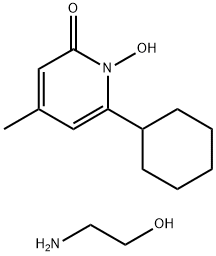Liranaftate , ≥99% , 88678-31-3
CAS NO.:88678-31-3
Empirical Formula: C18H20N2O2S
Molecular Weight: 328.43
MDL number: MFCD00865576
EINECS: 000-000-0
| Pack Size | Price | Stock | Quantity |
| 10MG | RMB79.20 | In Stock |
|
| 50MG | RMB207.20 | In Stock |
|
| 100MG | RMB391.20 | In Stock |
|
| others | Enquire |
PRODUCT Properties
| Melting point: | 98.5-99.5°C |
| Boiling point: | 462.5±55.0 °C(Predicted) |
| Density | 1.240±0.06 g/cm3(Predicted) |
| storage temp. | Keep in dark place,Sealed in dry,Room Temperature |
| solubility | DMSO (Slightly), Methanol (Slightly, Heated) |
| form | Solid |
| pka | 1.24±0.10(Predicted) |
| color | Off-White |
| Merck | 14,5515 |
Description and Uses
Liranaftate was launched in Japan as a new topical antifungal for the treatment of dermatophycoses. This compound belonging to the thiocarbamate class of antifungals can be prepared by condensation of 5,6,7,8-tetrahydro-2-naphthol with the corresponding Npyridylthiocarbamoyl chloride. It is a potent and specific inhibitor of squalene epoxidase and consequently a blocker of ergosterol biosynthesis in fungi, without any detectable effect on mammalian cholesterol biosynthesis in rat liver at therapeutic dose levels. Liranaftate was found to be significantly more active than the other thiocarbamate tolnaftate against several dermatophytes, including Trichophyton mentagrophyfes, and against certain yeasts, such as Crypfococcus neoformans. On the other hand, it was inactive against a variety of Gram-positive and negative bacteria. When applicated as a 1 or 2% cream during clinical trials, it was well tolerated and no systemic absorption was observed.
A squalene epoxidase inhibitor. Used as an antifungal.
Safety
| Symbol(GHS) |  GHS07 |
| Signal word | Warning |
| Hazard statements | H319-H315-H317 |
| Precautionary statements | P264-P280-P305+P351+P338-P337+P313P-P264-P280-P302+P352-P321-P332+P313-P362-P261-P272-P280-P302+P352-P333+P313-P321-P363-P501 |
| RTECS | FD3890000 |
| HS Code | 2933.39.4100 |






